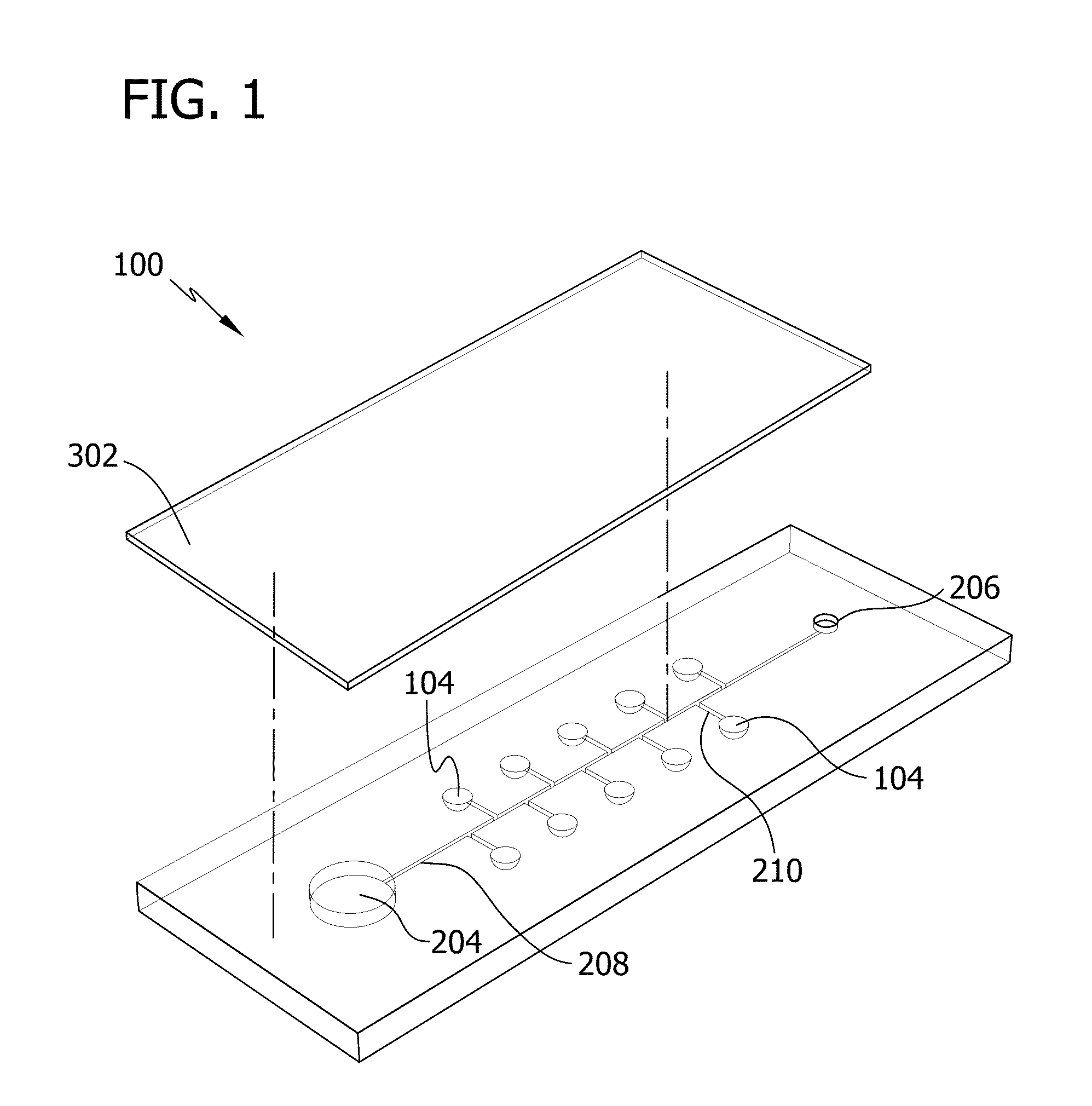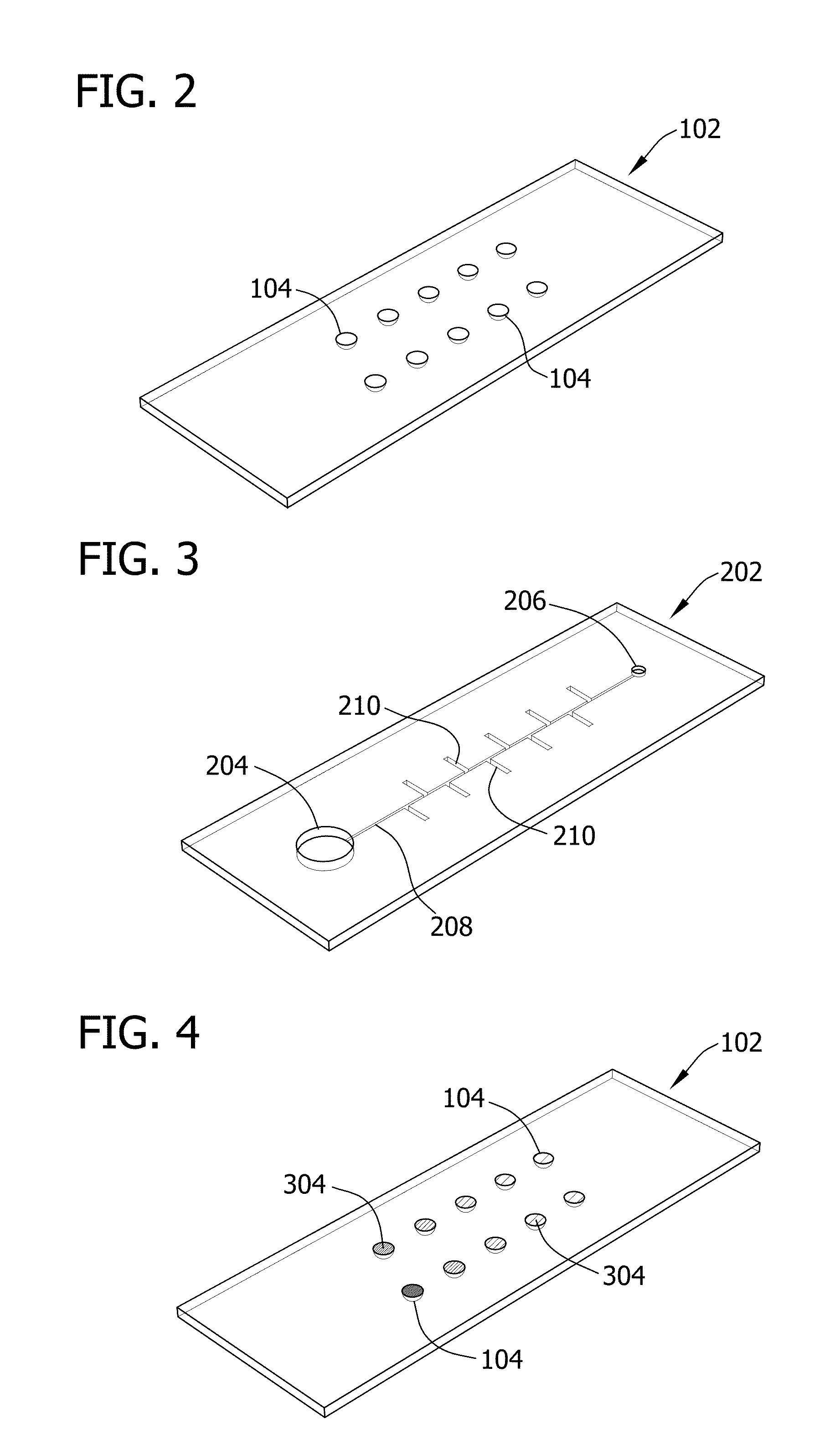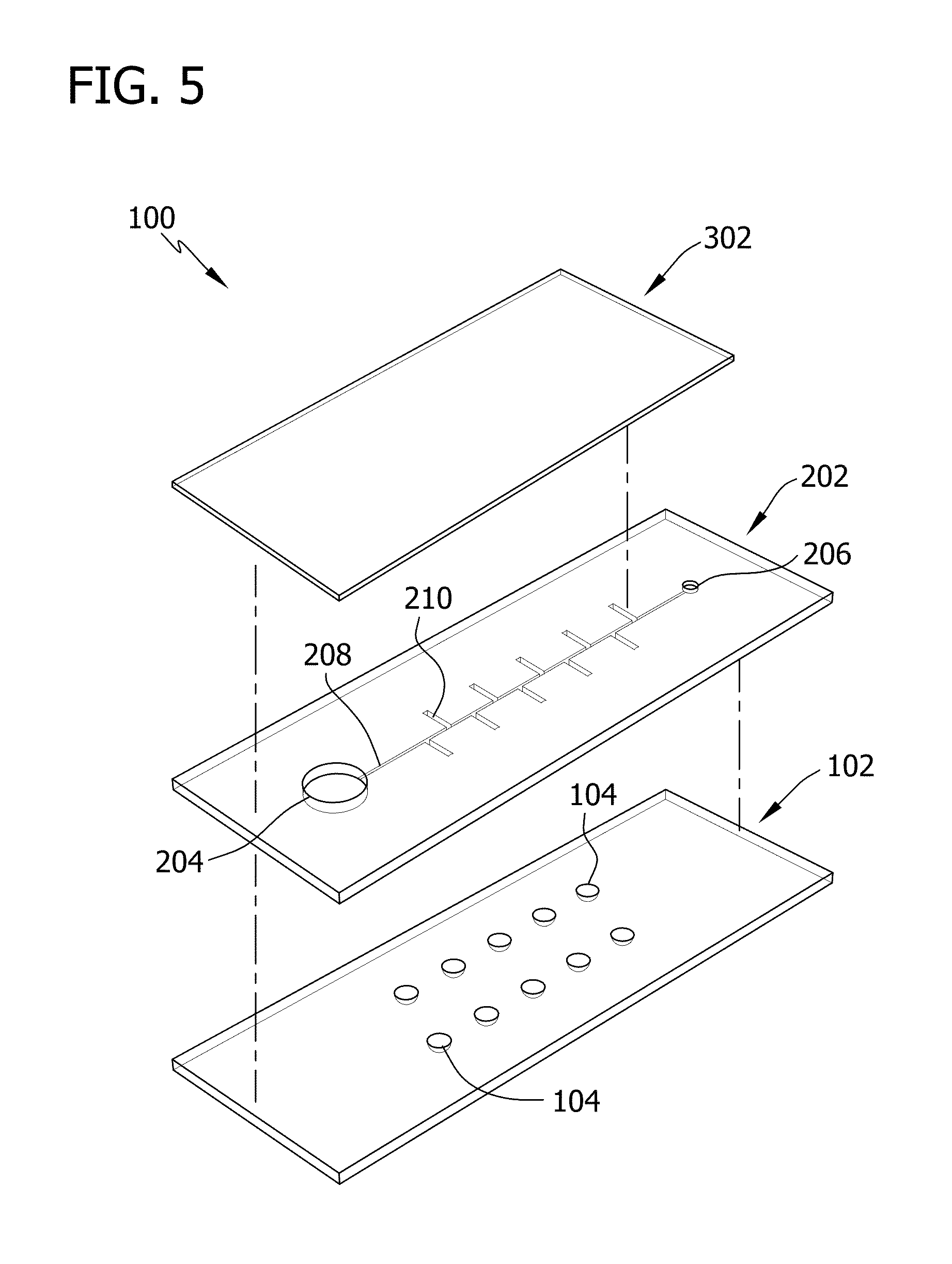Self-loading microfluidic device and methods of use
a microfluidic device and self-loading technology, applied in biochemistry apparatus and processes, laboratory glassware, instruments, etc., can solve the problems of subjective and variable analysis of these assays, insufficient laboratory availability of instruments, and high labor intensity
- Summary
- Abstract
- Description
- Claims
- Application Information
AI Technical Summary
Benefits of technology
Problems solved by technology
Method used
Image
Examples
example 1
Fabrication of Microfluidic Devices
[0092]In this Example, microfluidic devices including ten separate reaction wells were fabricated.
[0093]Specifically, devices were fabricated using soft lithography. Master templates were fabricated in SU-8 photoresist (Microchem) on silicon wafers using photolithography. Separate master templates were prepared for the chamber and channel layers of the device. The photoresist to form the ten reaction wells of the chamber layer was 300-μm high and 2-mm in diameter. The height of the photoresist to form the side channels and main channel of the channel layer was 50 μm and the width of the channel ranged from 150-260 μm. The devices were fabricated using polydimethylsiloxane (PDMS) to take advantage of the permeability of the polymer (for actuation of the sample solution) and the rapid prototyping capabilities. PDMS (Sylgard 184; Dow Corning) was mixed in a 1:10 ratio (base:cross linking agent), cast against the master templates to a height of ˜1-mm, ...
example 2
Loading and Degas-Driven Flow
[0095]In this Example, microfluidic devices prepared as described in Example 1 were used to demonstrate the loading and degas-driven flow in the microfluidic devices.
[0096]Specifically, various concentrations of blue dye were added into all ten reaction wells of the chamber layer of the device. After the liquid of the dye solution was evaporated, the device was assembled and vacuum degassed. The device was then removed from the vacuum and a 20-μL droplet of a solution of yellow dye was pipetted onto the inlet port. The movement of the yellow dye by degas-driven flow was then followed.
[0097]FIG. 23 is a sequence of illustrations depicting the loading and degas-driven flow of the yellow dye placed at the inlet port of the freshly degassed PDMS device. The yellow dye immediately filled the main channel and then filled the reaction wells by flowing through the side channel. The vacuum well continued to draw in the yellow dye until the droplet was consumed, a...
example 3
Controlling Concentration of Agents
[0098]In this Example, the reproducibility of controlling the concentration of agents in the reaction wells was determined.
[0099]Specifically, five devices were fabricated as described above and various concentrations of fluorescein (18-99 μM) were added to each reaction well and dried by evaporation. After the liquid was evaporated, the device was assembled and vacuum degassed. After degassing, a 20 μL droplet of deionized water was introduced at the inlet. After the liquid was introduced and isolated in the reaction wells to reconstitute the dried fluorescein, the fluorescence intensity of the reaction wells was imaged and quantified using ImageJ (FIG. 25). The mean fluorescence intensity of each chamber (n=5) between the five devices followed a linear trend (FIG. 26).
PUM
| Property | Measurement | Unit |
|---|---|---|
| flow rate | aaaaa | aaaaa |
| time | aaaaa | aaaaa |
| time | aaaaa | aaaaa |
Abstract
Description
Claims
Application Information
 Login to View More
Login to View More - R&D
- Intellectual Property
- Life Sciences
- Materials
- Tech Scout
- Unparalleled Data Quality
- Higher Quality Content
- 60% Fewer Hallucinations
Browse by: Latest US Patents, China's latest patents, Technical Efficacy Thesaurus, Application Domain, Technology Topic, Popular Technical Reports.
© 2025 PatSnap. All rights reserved.Legal|Privacy policy|Modern Slavery Act Transparency Statement|Sitemap|About US| Contact US: help@patsnap.com



